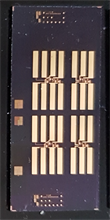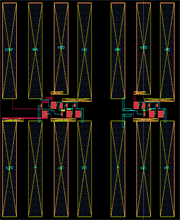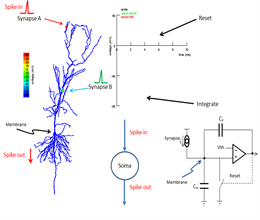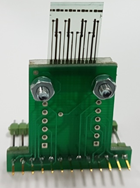
"Everything we call real is made of things that cannot be regarded as real." - Niels Bohr
New Technologies For Neural Architectures
The primate brain process information robustly with extremely low-power consumption, using asynchronous massively parallel cortical networks constructed with surprisingly slow, less accurate, highly heterogeneous, and unreliable neural elements: neurons and synapses. On the other hand, decades of advancements in VLSI fabrication technologies given us homogenous transistor fabric, which is optimised for fast, accurate, and reliable synchronous operations, to develop digital circuits. Although it is possible to force fit biological natural dynamics on to modern hardware technologies, it is found to be highly inefficient and challenging in mimicking massively parallel cortical networks in these technologies. Therefore, there is a need for building biologically plausible fabrication technology. Here, among others, enabling low-power operation and facilitating gigantic neuron connectivity are some of the major challenges. We are exploring organic and inorganic new fabrication technologies and novel devices that could optimise mimicking of cortical network in hardware.
This project funded by the EPS Faculty Strategic Fund and EPSRC Centre for Innovative Manufacturing to carry out initial research. The current collaboration is with the School of Chemistry, The University of Manchester and NeuDrive Ltd. Others collaborators of these projects are Prof Piotr Dudek in School of EEE, Prof Michael Turner in School of Chemistry, and Dr Leszek Majewski in School of EEE.
This project funded by the EPS Faculty Strategic Fund and EPSRC Centre for Innovative Manufacturing to carry out initial research. The current collaboration is with the School of Chemistry, The University of Manchester and NeuDrive Ltd. Others collaborators of these projects are Prof Piotr Dudek in School of EEE, Prof Michael Turner in School of Chemistry, and Dr Leszek Majewski in School of EEE.




Neurons in plastic electronic technologies:
First two pitures: Neurons fabricated in the NeuDrive organic thin film technology.
Last picture: A neuron circuit using the flexible printed transistor technology developed by Prof Michael Turner, University of Manchester.
First two pitures: Neurons fabricated in the NeuDrive organic thin film technology.
Last picture: A neuron circuit using the flexible printed transistor technology developed by Prof Michael Turner, University of Manchester.





